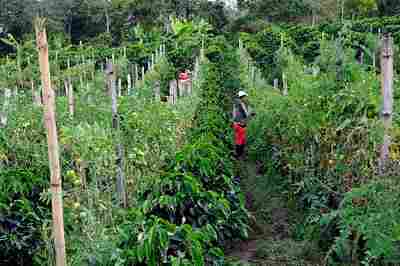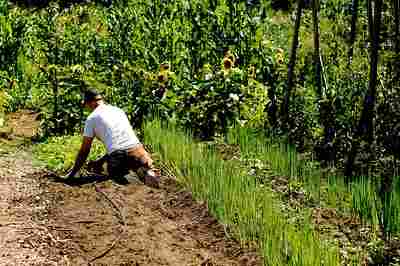21 Benefits and Disadvantages of Aquaponics Discussed
Benefits of aquaponics are; water conservation, relatively rapid plant growth, healthy organic produce, role in soil conservation, high relative sustainability, flexibility of scale, space efficiency, energy conservation, minimal maintenance requirement, income generation, and role in fighting food insecurity.
Disadvantages of aquaponics include initial cost, setup technical requirements, relative complexity, electricity consumption, relatively narrow crop range, risk of nutrient deficiency, risk of system failure or incompatibility, need for water quality monitoring.
Benefits of Aquaponics
Benefits of aquaponics are; water conservation, relatively rapid plant growth, healthy organic produce, role in soil conservation, high relative sustainability, flexibility of scale, space efficiency, energy conservation, minimal maintenance requirement, income generation, and role in fighting food insecurity.
1. Water Conservation
Aquaponics offers numerous benefits, and one of the most significant advantages is water conservation. In fact, aquaponics systems use up to 90% less water compared to traditional soil-based farming methods. This remarkable water-saving feature makes aquaponics an environmentally friendly and sustainable option for food production.
By combining aquaculture (fish farming) and hydroponics (soilless plant cultivation), aquaponics creates a symbiotic relationship between fish and plants. The fish waste, rich in nutrients, serves as a natural fertilizer for the plants. As the plants absorb these nutrients, they purify the water, which is then recirculated back to the fish tanks. This closed-loop system minimizes water waste and ensures efficient water usage.
Water conservation is crucial in today’s world, where water scarcity is a growing concern. Traditional agriculture practices often require excessive amounts of water, leading to depletion of water sources and environmental degradation. Aquaponics provides a sustainable alternative by significantly reducing water consumption.
In addition to conserving water, aquaponics also offers other benefits. For instance, it allows for relatively rapid plant growth. The nutrient-rich water in the system provides plants with an abundant supply of essential nutrients, promoting their healthy development. As a result, plants grown in aquaponics systems tend to grow faster compared to those grown in traditional soil-based methods.
2. Relatively Rapid Plant Growth
Aquaponics offers several benefits, and one of them is the relatively rapid growth of plants. This means that plants grown in aquaponics systems tend to grow faster compared to those grown in traditional soil-based methods.
The reason behind this accelerated growth is the nutrient-rich water in the aquaponics system. The fish waste, which is rich in nutrients, serves as a natural fertilizer for the plants. As the plants absorb these nutrients, they receive an abundant supply of essential elements that promote their healthy development. This nutrient-dense environment allows plants to thrive and grow at an accelerated rate.
In traditional soil-based farming, plants rely on the nutrients present in the soil. However, the availability and accessibility of these nutrients can vary, leading to slower growth rates. In aquaponics, the plants have constant access to a consistent supply of nutrients, resulting in faster growth.
Another factor that contributes to the rapid growth of plants in aquaponics is the optimized growing conditions. Aquaponics systems provide an ideal environment for plant growth, with factors such as temperature, pH levels, and oxygen levels carefully controlled. These optimal conditions create an ideal setting for plants to flourish and reach their full growth potential.
The combination of nutrient-rich water and optimized growing conditions in aquaponics systems creates an environment that promotes rapid plant growth. This means that farmers and gardeners can enjoy a quicker turnaround time from planting to harvest, allowing for more frequent crop cycles and increased productivity.
3. Healthy Organic Produce
Aquaponics offers the benefit of producing healthy organic produce. One of the key advantages of this farming method is that it eliminates the risk of chemical contamination when properly cultivated.
In traditional farming, the use of chemical fertilizers, pesticides, and herbicides is common to enhance plant growth and protect crops from pests and diseases. However, these chemicals can leave residues on the produce, posing potential health risks to consumers.
With aquaponics, the reliance on chemical inputs is significantly reduced or eliminated altogether. The nutrient-rich water in the aquaponics system serves as a natural fertilizer for the plants, eliminating the need for synthetic fertilizers. Additionally, the closed-loop system minimizes the risk of pests and diseases, reducing the need for chemical pesticides and herbicides.
By eliminating chemical inputs, aquaponics ensures that the produce grown is free from harmful residues. This makes it an excellent choice for individuals who prioritize organic and chemical-free food.
Furthermore, the absence of chemical contamination in aquaponics also benefits the environment. Chemical fertilizers and pesticides can have detrimental effects on soil health, water quality, and biodiversity. By avoiding the use of these chemicals, aquaponics contributes to the preservation of ecosystems and promotes sustainable agriculture practices.
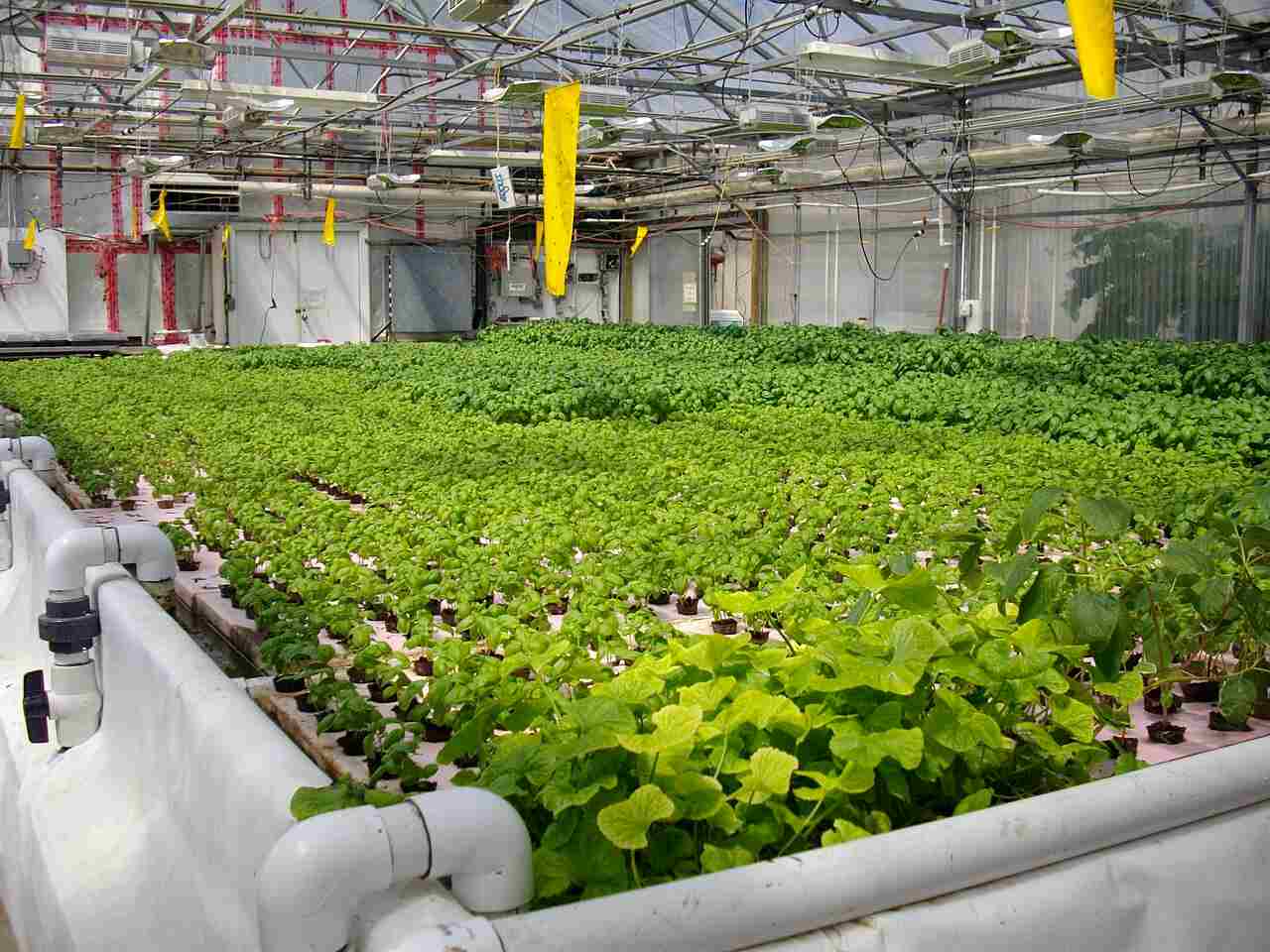
4. Role in Mitigating Erosion and Soil Degradation
Aquaponics plays a significant role in mitigating erosion and soil degradation, which is one of its key benefits. This farming method reduces the need for tilling or soil handling and disturbance, which are common practices in traditional agriculture. By eliminating these practices, aquaponics helps to preserve the structure and fertility of the soil.
In traditional farming, tilling is often used to prepare the soil for planting and to control weeds. However, excessive tilling can lead to soil erosion, as it disrupts the natural arrangement of soil particles and exposes them to wind and water erosion. Additionally, tilling can also degrade the soil’s organic matter content, which is essential for nutrient retention and water holding capacity.
Aquaponics eliminates the need for tilling altogether. The plants in the system are grown in grow beds or floating rafts, where their roots are directly exposed to the nutrient-rich water. This eliminates the need for soil and reduces the risk of erosion and degradation.
By minimizing soil disturbance, aquaponics helps to maintain the integrity of the soil structure and prevent erosion. This is particularly important in areas with fragile soils or prone to erosion. Additionally, the absence of soil disturbance also promotes the growth of beneficial soil microorganisms, which contribute to soil health and fertility.
5. High Relative Sustainability
Aquaponics offers high relative sustainability, making it a valuable farming method. This sustainability stems from its ability to imitate natural ecosystems and processes.
In traditional agriculture, there is often a heavy reliance on synthetic fertilizers and pesticides, which can have detrimental effects on the environment. Aquaponics, on the other hand, relies on a symbiotic relationship between fish and plants. The fish waste provides essential nutrients for the plants, while the plants filter and purify the water for the fish. This closed-loop system minimizes the need for external inputs and reduces the risk of water pollution.
By mimicking natural ecosystems, aquaponics also promotes biodiversity. The system creates a habitat for beneficial microorganisms, insects, and other organisms that contribute to the overall health of the system. This biodiversity helps to maintain a balanced ecosystem and reduces the need for chemical interventions to control pests and diseases.
Another aspect of aquaponics’ sustainability is its water efficiency. Traditional agriculture often requires large amounts of water for irrigation, leading to water scarcity and depletion of freshwater resources. In aquaponics, water is continuously recycled within the system, significantly reducing water consumption. The water used in the system is only replaced to compensate for evaporation and transpiration by the plants.
Furthermore, aquaponics can be practiced in various settings and scales, making it adaptable to different contexts. It can be implemented by sole proprietors, subsistence farmers, government entities, and educational bodies. This flexibility allows for the integration of aquaponics into existing agricultural systems or the establishment of new systems in urban areas where space is limited.
6. Flexibility of Scale
Aquaponics offers the flexibility of scale, making it accessible to a wide range of users, including sole proprietors, subsistence farmers, government entities, and educational bodies. This adaptability is one of the key benefits of aquaponics, allowing it to be implemented in various contexts and settings.
For sole proprietors or small-scale farmers, aquaponics provides an opportunity to engage in sustainable agriculture on a manageable scale. The system can be set up in a backyard or a small plot of land, requiring minimal space. This makes it an ideal option for individuals who want to grow their own food or start a small business without the need for extensive land or resources.
Subsistence farmers, especially those in areas with limited access to fertile soil or water resources, can also benefit from aquaponics. The system’s water efficiency and minimal maintenance requirements make it a viable option for communities facing challenges such as drought or soil degradation. Aquaponics can provide a reliable source of fresh produce and protein-rich fish, improving food security and nutrition.
Government entities and educational bodies can utilize aquaponics as a tool for research, education, and community development. Aquaponics systems can be implemented in schools, universities, or research institutions to teach students about sustainable agriculture and environmental stewardship. Government agencies can also promote aquaponics as a means to support local food production, reduce reliance on imports, and create employment opportunities.
The flexibility of scale in aquaponics extends beyond the physical size of the system. It also allows for scalability in terms of production output. Whether it’s a small-scale system for personal use or a larger commercial operation, aquaponics can be tailored to meet specific needs and goals. This scalability makes it possible to start small and gradually expand as confidence and expertise grow.
7. Can be Used for Both Vegetable Cultivation and Fish Farming
Aquaponics offers the unique advantage of being able to be used for both vegetable cultivation and fish farming. While it is most commonly associated with vegetable production, the integration of fish into the system adds another layer of benefits.
In aquaponics, the waste produced by the fish is converted into nutrients for the plants, creating a symbiotic relationship between the two. This means that not only can you grow a variety of vegetables, herbs, and fruits, but you can also raise fish for consumption or sale.
The ability to cultivate both vegetables and fish in the same system provides a diverse range of food options. You can grow leafy greens like lettuce and spinach, root vegetables like carrots and radishes, and even fruiting plants like tomatoes and peppers. At the same time, you can raise fish such as tilapia, trout, or catfish, depending on your preferences and local regulations.
This dual-purpose nature of aquaponics allows for a more efficient use of resources and space. Instead of maintaining separate systems for vegetable cultivation and fish farming, aquaponics combines them into one integrated system. This not only saves space but also reduces the need for additional inputs such as water and fertilizers.
By utilizing aquaponics for both vegetable cultivation and fish farming, individuals and communities can maximize their food production potential while minimizing their environmental impact. It provides a sustainable and self-sufficient approach to food production that can be adapted to various scales and contexts.
8. Space Efficiency
Aquaponics offers the significant advantage of space efficiency, making it an ideal choice for those with limited space for traditional gardening or fish farming. By combining vegetable cultivation and fish farming in one integrated system, aquaponics conserves space while maintaining high productivity.
In a traditional garden, plants require a certain amount of space to grow and thrive. Similarly, fish farming requires large tanks or ponds to accommodate the fish. However, in aquaponics, the plants and fish share the same water and space, eliminating the need for separate areas. This means that you can grow a variety of vegetables and raise fish in a compact space, maximizing the use of available area.
The space efficiency of aquaponics is particularly beneficial for urban dwellers or those with small yards or balconies. With a well-designed aquaponics system, you can set up a productive garden and fish farm in a limited space, such as a rooftop or a small backyard. This allows individuals and communities in urban areas to engage in sustainable food production, even in the absence of large plots of land.
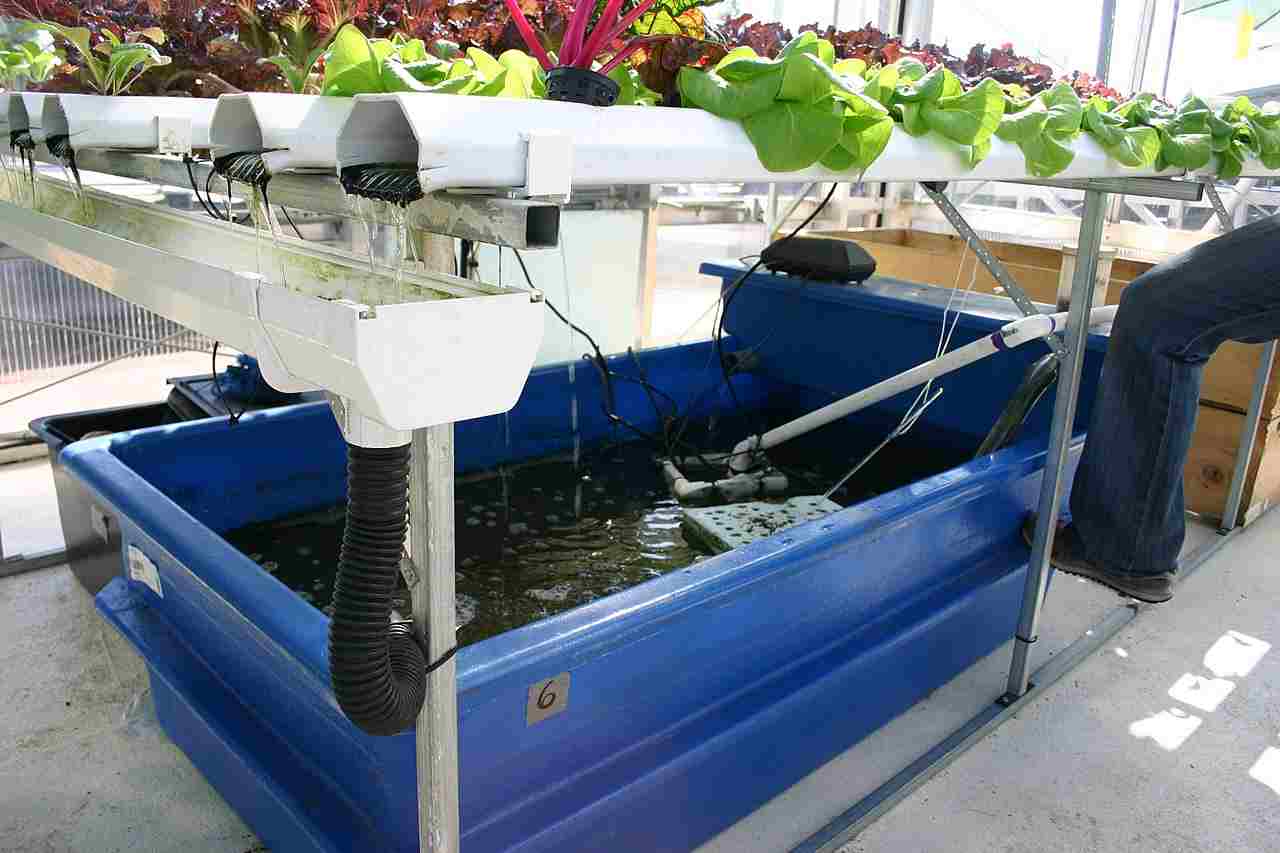
9. Energy Conservation
Aquaponics offers the advantage of energy conservation, making it a sustainable and efficient method of food production. By combining aquaculture and hydroponics, aquaponics eliminates the need for traditional farming practices that consume significant amounts of energy.
In traditional agriculture, energy is often expended on tillage, which involves plowing, cultivating, and preparing the soil for planting. However, in aquaponics, there is no need for soil preparation or tilling since the plants are grown in water-based systems. This eliminates the energy-intensive process of soil cultivation, resulting in energy savings.
Furthermore, aquaponics reduces the need for artificial lighting. In indoor hydroponic systems, plants require artificial lighting to compensate for the lack of natural sunlight. However, in aquaponics, the fish waste provides nutrients to the plants, and the plants help filter the water for the fish. This symbiotic relationship allows the plants to thrive without the need for excessive artificial lighting, reducing energy consumption.
Another energy-saving aspect of aquaponics is the elimination of the need for chemical fertilizers and pesticides. Traditional farming often relies on the use of synthetic fertilizers and pesticides, which require energy-intensive manufacturing processes. In aquaponics, the fish waste provides natural nutrients for the plants, eliminating the need for chemical fertilizers. Additionally, the closed-loop system of aquaponics minimizes the risk of pests and diseases, reducing the need for pesticides.
The energy conservation benefits of aquaponics make it an environmentally friendly and sustainable method of food production. By eliminating energy-intensive practices such as tillage, artificial lighting, and the use of chemical inputs, aquaponics reduces the carbon footprint associated with traditional agriculture. This makes aquaponics a viable option for individuals and communities looking to minimize their energy consumption and contribute to a greener future.
10. Minimal Maintenance Requirement
Aquaponics offers the advantage of minimal maintenance requirements, making it an attractive option for individuals and communities looking for a low-maintenance method of food production. Unlike traditional farming methods that often require extensive labor and upkeep, aquaponics systems are relatively easy to maintain.
One of the key reasons for the minimal maintenance requirement in aquaponics is the closed-loop system. The symbiotic relationship between the fish and plants creates a self-sustaining ecosystem where the waste produced by the fish provides natural nutrients for the plants. This eliminates the need for regular fertilization and reduces the maintenance tasks associated with traditional farming.
Additionally, aquaponics systems require less water compared to conventional agriculture. The water in the system is continuously recycled, with only minimal amounts lost through evaporation or plant uptake. This water conservation aspect not only reduces the need for constant monitoring and irrigation but also contributes to overall sustainability.
Furthermore, the absence of soil in aquaponics eliminates the need for soil preparation, weeding, and pest control. Traditional farming often requires regular tilling, weeding, and the use of pesticides to protect crops from pests and diseases. In aquaponics, the plants are grown in water-based systems, reducing the maintenance tasks associated with soil-based farming.
While the maintenance requirements in aquaponics are generally minimal, it’s important to note that larger and more complex systems may require additional attention. Commercial-scale aquaponics operations or systems with advanced technology may involve more maintenance tasks such as monitoring water quality, adjusting nutrient levels, and ensuring proper functioning of equipment. However, for small-scale and backyard aquaponics systems, the maintenance tasks are typically straightforward and manageable.
11. Income Generation
Aquaponics offers the benefit of income generation, making it an attractive option for individuals and communities looking to generate revenue through sustainable agriculture. By combining fish farming and vegetable cultivation, aquaponics provides the opportunity to sell both fish and organic produce, creating multiple streams of income.
One way to generate income through aquaponics is by selling the harvested fish. Fish such as tilapia, trout, and catfish are commonly raised in aquaponics systems and can be sold to local markets, restaurants, or directly to consumers. The high demand for fresh, locally sourced fish can make this a profitable venture.
In addition to fish, aquaponics allows for the cultivation of a wide variety of vegetables and herbs. These organic produce can be sold at farmers’ markets, through community-supported agriculture (CSA) programs, or to restaurants and grocery stores. The ability to grow fresh, pesticide-free produce year-round can be a selling point for customers looking for high-quality, sustainable food options.
Furthermore, aquaponics can also provide opportunities for value-added products. For example, the herbs and vegetables grown in the system can be used to make value-added products like pesto, salsa, or infused oils, which can be sold at a higher price point.
12. Role in Fighting Food Insecurity
Aquaponics plays a significant role in fighting food insecurity, which is one of its key benefits. By utilizing this sustainable farming method, communities can address the challenge of limited access to nutritious food.
One way aquaponics helps combat food insecurity is by providing a consistent supply of fresh produce. With aquaponics, vegetables and herbs can be grown year-round, regardless of the external climate or season. This means that communities can have access to a variety of nutrient-rich foods even in areas with limited agricultural resources.
Moreover, aquaponics can be implemented in urban areas, making it possible to grow food in spaces where traditional farming methods may not be feasible. By utilizing vertical farming techniques and maximizing space efficiency, aquaponics systems can be set up in small urban environments, such as rooftops or unused buildings. This allows communities to produce their own food locally, reducing the reliance on long-distance transportation and ensuring a more sustainable food system.
Additionally, aquaponics can be a valuable tool in addressing food deserts, which are areas where fresh, healthy food is scarce. By establishing aquaponics systems in these underserved communities, residents can have access to fresh produce that is grown locally and free from harmful pesticides. This not only improves the nutritional quality of their diets but also empowers individuals to take control of their own food production.
Furthermore, aquaponics can be used as an educational tool to teach communities about sustainable agriculture and food production. By involving schools, community centers, and other educational institutions, aquaponics can help raise awareness about the importance of healthy eating and provide hands-on learning experiences for individuals of all ages.
13. Minimal Waste Production
Aquaponics is not only beneficial for its ability to provide fresh produce and combat food insecurity, but it also offers the advantage of minimal waste production. This means that when aquaponics systems are handled optimally, there is no water pollution or excessive waste generated.
One of the key reasons why aquaponics minimizes waste production is its closed-loop system. In this system, the waste produced by the fish is converted into nutrients for the plants. The fish waste, which contains ammonia, is broken down by beneficial bacteria into nitrites and then nitrates, which are essential nutrients for plant growth. The plants absorb these nutrients, effectively filtering the water and creating a symbiotic relationship between the fish and plants.
By utilizing this closed-loop system, aquaponics eliminates the need for chemical fertilizers or pesticides, which can contribute to water pollution in traditional farming methods. This makes aquaponics an environmentally friendly and sustainable farming practice.
Furthermore, aquaponics systems are designed to be efficient in water usage. The water in the system is continuously recirculated, reducing the need for large amounts of water compared to conventional farming methods. This water conservation aspect of aquaponics not only helps to minimize waste but also addresses the issue of water scarcity in many regions.
Disadvantages of Aquaponics
Disadvantages of aquaponics include initial cost, setup technical requirements, relative complexity, electricity consumption, relatively narrow crop range, risk of nutrient deficiency, risk of system failure or incompatibility, need for water quality monitoring.
1. Initial Cost
One of the main drawbacks of aquaponics is the initial cost involved in setting up the system. This includes the expenses for tanks, flow conduits, pumps, and other necessary equipment. While the long-term savings on water and fertilizer can be significant, the upfront investment can be a barrier for some individuals or businesses.
The initial cost of aquaponics can vary depending on the scale and complexity of the system. Larger systems with more advanced technology and automation can be more expensive to set up. Additionally, the cost of high-quality equipment and materials can add up.
However, it’s important to note that the initial cost is a one-time investment, and the benefits of aquaponics can outweigh this drawback in the long run. Aquaponics can provide a sustainable and efficient method of food production, reducing the need for external inputs and minimizing environmental impact.
2. Setup Technical Requirements
Setting up an aquaponics system requires careful attention to the technical requirements and proper assembly of components and equipment. This aspect can be seen as one of the disadvantages of aquaponics, as it adds complexity to the process.
To ensure the system functions effectively, it is essential that the setup is done professionally. This involves understanding the specific needs of the fish, plants, and beneficial bacteria, as well as the proper placement and connection of tanks, flow conduits, and pumps. Each component plays a crucial role in the overall functioning of the system, and any errors or oversights during setup can lead to system failure or inefficiency.
The technical requirements of aquaponics can vary depending on the scale and complexity of the system. Larger systems with more advanced technology may require additional expertise and knowledge. It is important to have a solid understanding of the principles of aquaponics and the specific requirements of the chosen fish and plant species.
While the setup process may seem daunting, it is important to remember that aquaponics offers numerous benefits in terms of sustainable food production and resource conservation. With proper planning and attention to detail during setup, the initial challenges can be overcome, and the system can thrive.
3. Relative Complexity
Aquaponics is a farming method that combines more than one agricultural field and requires expertise in multiple areas. While this complexity can be seen as a disadvantage, it also offers unique benefits in terms of sustainable food production and resource conservation.
One aspect of the relative complexity of aquaponics is the need to understand the interplay between fish, plants, and beneficial bacteria. Each component plays a crucial role in the overall functioning of the system, and it requires knowledge of their specific needs and interactions. This includes understanding the ideal water parameters, nutrient levels, and pH balance for both the fish and plants.
Additionally, the setup and maintenance of an aquaponics system involve technical requirements that may seem daunting at first. Proper placement and connection of tanks, flow conduits, and pumps are essential for the system to function effectively. Any errors or oversights during setup can lead to system failure or inefficiency.
4. May Consume Electricity
Aquaponics systems may consume electricity due to the use of pumps and lighting. While this is a common requirement for many aquaponics setups, it is important to consider the potential disadvantages associated with electricity consumption.
The use of pumps is essential for circulating water throughout the system, ensuring that fish waste is properly filtered and distributed to the plants. These pumps require electricity to function, which adds to the overall energy consumption of the system. Additionally, lighting may be necessary to provide adequate illumination for the plants, especially in indoor or low-light environments. This further contributes to the electricity consumption of the aquaponics system.
The reliance on electricity can be seen as a disadvantage for several reasons. Firstly, it increases the operational costs of the system, as electricity bills need to be taken into account. This can be a significant factor, especially for larger or commercial-scale aquaponics setups. Secondly, the use of electricity introduces a level of dependency on external power sources. In the event of a power outage or disruption, the system may be compromised, potentially leading to negative impacts on the fish and plants.
To mitigate the potential disadvantages of electricity consumption in aquaponics, it is important to consider energy-efficient options. Choosing energy-efficient pumps and LED lighting can help reduce the overall electricity usage of the system. Additionally, implementing backup power sources, such as generators or battery systems, can provide a contingency plan in case of power interruptions.
5. Relatively Narrow Range of Crops
One of the disadvantages of aquaponics is that not all crops excel in this system. Tubers, such as potatoes and other root crops, are generally unsuited for aquaponics. Additionally, grain crops may not thrive in this system.
Aquaponics is a unique method of cultivation that combines aquaculture and hydroponics. While it offers many benefits, such as efficient use of water and nutrients, there are limitations when it comes to the range of crops that can be successfully grown.
Root crops, like potatoes and carrots, require a loose soil structure to develop their tubers. In aquaponics, the growing medium is typically inert, such as clay pebbles or gravel, which does not provide the necessary conditions for root crops to flourish. These crops need soil that allows for proper root development and expansion, which is not possible in an aquaponics system.
Similarly, grain crops, such as wheat or corn, may not be well-suited for aquaponics. These crops have specific nutrient requirements and growth patterns that may not align with the nutrient availability and water conditions in an aquaponics system. While leafy greens, herbs, and certain fruiting plants thrive in aquaponics, grain crops may not achieve optimal growth and yield.
The relatively narrow range of crops that can be grown in aquaponics can be seen as a limitation for farmers or individuals looking to diversify their produce. It may restrict the variety of crops that can be cultivated and limit the potential market opportunities. However, it is important to note that aquaponics excels in producing leafy greens, herbs, and certain fruiting plants, which can still provide a valuable and profitable harvest.
To overcome this limitation, aquaponics practitioners can focus on growing crops that are well-suited for this system. Leafy greens, such as lettuce, spinach, and kale, are excellent choices as they thrive in the nutrient-rich water of aquaponics. Herbs like basil, mint, and cilantro also do well in this system. By selecting crops that are compatible with aquaponics, farmers can maximize their yields and ensure the success of their operations.
6. Plants May Lack Some Nutrients
In aquaponics, plants receive their nutrients from the waste produced by the fish in the system. However, there is a possibility that certain essential nutrients may not be adequately provided to the plants if not carefully managed. This can occur relatively often if proper attention is not given to the system.
One of the benefits of aquaponics is the efficient use of nutrients, as they are recycled within the system. However, it is important to ensure that all necessary nutrients are present in sufficient quantities for the plants to thrive. If any nutrient is lacking, it can lead to nutrient deficiencies in the plants, affecting their growth and overall health.
To prevent nutrient deficiencies, it is crucial to monitor the nutrient levels in the system and make adjustments as needed. This can be done through regular water testing and analysis. By understanding the nutrient requirements of different crops and the nutrient levels in the system, aquaponics practitioners can make informed decisions about supplementing any deficiencies.
Additionally, the type of fish and their feeding habits can also impact the nutrient availability for the plants. Different fish species produce different types and quantities of waste, which can affect the nutrient composition in the water. It is important to select fish species that are compatible with the nutrient requirements of the crops being grown.
By carefully managing the nutrient levels in the system and ensuring that all essential nutrients are provided, aquaponics practitioners can minimize the risk of nutrient deficiencies in their plants. This will help to promote healthy growth and maximize the yield of the crops.
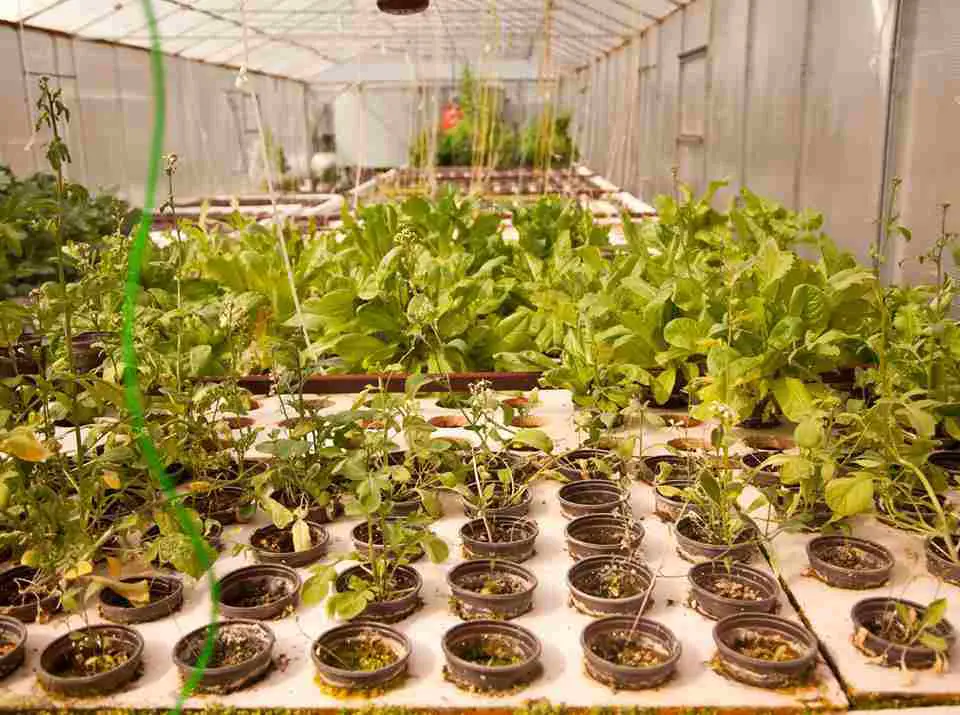
7. Risk of System Failure or Incompatibility
Aquaponics offers numerous benefits, but it is not without its risks. One of the potential drawbacks is the risk of system failure or incompatibility. This risk arises from the delicate balance that must be maintained between the crops and aquatic organisms in the system.
The success of an aquaponics system relies on the symbiotic relationship between the fish, plants, and beneficial bacteria. If any component of the system fails or becomes incompatible with the others, it can disrupt the entire ecosystem. For example, if the fish population becomes too large for the system to handle, it can lead to an imbalance in nutrient levels and water quality, negatively impacting the plants’ health.
Similarly, if the plants are not suitable for the aquaponics system or if their nutrient requirements are not adequately met, they may struggle to thrive. This can result in stunted growth, reduced yield, or even the death of the plants. It is essential to select compatible crops that can thrive in the specific conditions of the aquaponics system.
Another potential risk is the failure of equipment or infrastructure. Aquaponics systems rely on various components such as pumps, filters, and pipes to circulate water and maintain optimal conditions. If any of these components malfunction or break down, it can disrupt the entire system and jeopardize the health of the fish and plants.
To mitigate these risks, it is crucial to regularly monitor the system and address any issues promptly. This includes conducting routine maintenance, checking water parameters, and ensuring that all equipment is functioning correctly. Additionally, it is essential to have contingency plans in place in case of emergencies or system failures.
8. Routine Water Quality Testing Required
Routine water quality testing is an essential aspect of aquaponics, but it can add to the complexity of the system. This is one of the disadvantages of aquaponics that farmers need to consider.
Maintaining optimal water quality is crucial for the health and well-being of both the fish and plants in the system. Regular testing allows farmers to monitor key parameters such as pH levels, ammonia, nitrite, and nitrate concentrations. By keeping these parameters within the appropriate range, farmers can ensure that the aquatic organisms and plants thrive.
However, conducting routine water quality testing requires time, effort, and resources. Farmers need to regularly collect water samples and perform tests using appropriate testing kits or equipment. They need to be knowledgeable about the ideal ranges for each parameter and take corrective actions if any deviations are detected.
Moreover, interpreting the test results accurately is essential. Farmers need to understand the implications of the test results and make informed decisions based on them. For example, if ammonia levels are high, it may indicate an issue with the fish population or overfeeding. In such cases, farmers need to take immediate action to rectify the situation and prevent any harm to the system.
Routine water quality testing also adds to the overall maintenance requirements of the aquaponics system. It is an ongoing task that cannot be neglected. Farmers need to allocate time and resources to regularly test the water and make any necessary adjustments to maintain optimal conditions.
FAQs
1. How Does Aquaponics Work?
Aquaponics is an innovative hybrid sustainable agricultural practice that works by combining aquaculture, which involves raising fish, mollusks, and shrimp, with hydroponics, which is the cultivation of plants in nutrient-rich water. This unique system creates a symbiotic relationship between the fish and the plants, where the fish waste provides essential nutrients for the plants, and the plants filter and purify the water for the fish.
In aquaponics, the fish are housed in tanks or ponds, and their waste, which contains ammonia, is broken down by beneficial bacteria into nitrites and then nitrates. These nitrates serve as a nutrient source for the plants, which are grown in grow beds or floating rafts. The plants take up the nitrates, effectively removing them from the water, and in turn, the clean water is returned to the fish tanks.
This closed-loop system is highly efficient and sustainable, as it minimizes water usage and eliminates the need for synthetic fertilizers. It also allows for year-round cultivation of both fish and plants, making it a viable option for food production in various climates and environments.
2. Do Plants Grow Faster in Aquaponics?
Plants in aquaponics systems have the potential to grow faster compared to traditional soil-based gardening. This is due to the constant access to nutrients provided by the symbiotic relationship between the fish and plants. In aquaponics, the fish waste is broken down by beneficial bacteria into nitrates, which serve as a nutrient source for the plants. As a result, the plants receive a continuous supply of essential nutrients, allowing them to thrive and grow at an accelerated rate.
The nutrient-rich water in aquaponics systems eliminates the need for plants to search for nutrients in the soil, as is the case in traditional gardening. This means that plants can allocate more energy towards growth and development, resulting in faster growth rates. Additionally, the controlled environment of aquaponics systems, such as temperature and lighting, can further optimize plant growth.
It is important to note that the growth rate of plants in aquaponics can vary depending on various factors such as the type of plant, water quality, and system design. However, many aquaponics practitioners have reported significant improvements in plant growth compared to traditional gardening methods.
3. What Do the Beneficial Bacteria do Exactly in Aquaponics?
In aquaponics, the beneficial bacteria play a crucial role in maintaining the health and balance of the system. These bacteria are responsible for removing waste from the water and converting fish waste into nutrients through a process called nitrification.
Nitrification is a two-step process that involves the conversion of toxic ammonia, produced by fish waste, into nitrites and then into nitrates. This process is facilitated by nitrifying bacteria, such as Nitrosomonas and Nitrobacter, which help drive the nitrogen cycle in the system.
First, Nitrosomonas bacteria convert ammonia into nitrites, which are still toxic to fish and plants. Then, Nitrobacter bacteria further convert nitrites into nitrates, which are the primary source of nutrients for the plants.
By breaking down fish waste and converting it into nitrates, the beneficial bacteria provide a continuous supply of essential nutrients to the plants. This symbiotic relationship between the fish, bacteria, and plants creates a self-sustaining ecosystem where the fish provide the nutrients for the plants, and the plants filter the water for the fish.
The presence of these beneficial bacteria is essential for the overall health and success of an aquaponics system. They help maintain water quality, prevent the buildup of toxic substances, and ensure that the plants receive the necessary nutrients for growth.
4. What is The Best Method of Aquaponics?
The best method of aquaponics is a topic of debate, but two popular options are deep water culture (DWC) and nutrient film technique (NFT).
DWC is considered one of the best methods because it allows the plant roots to be in direct contact with the nutrient-rich water. This direct contact ensures that the plants have easy access to the necessary nutrients for their growth. The roots are suspended in the water, allowing for efficient nutrient absorption.
NFT is another effective method where a thin film of nutrient-rich water flows over the roots of the plants. This method provides a continuous supply of nutrients to the plants, promoting their growth.
The best method of aquaponics can vary depending on factors such as the type of aquatic organisms being raised and the specific plants being grown. Each method has its advantages and disadvantages, so it’s important to consider the specific needs of your system and the goals you want to achieve.
5. What is the Algae Problem in Aquaponics?
The algae problem in aquaponics is a common issue that arises due to conducive aquatic conditions. Algae are microscopic organisms that can grow rapidly in the nutrient-rich water of an aquaponics system. While some algae growth is normal and even beneficial, excessive algae can cause several problems.
One of the main issues with algae is that it can smother the roots of the plants. As algae multiply, they can form dense mats that cover the roots, preventing them from accessing oxygen and nutrients. This can lead to stunted growth or even the death of the plants.
Additionally, algae can cause pH shifts in the water. As they photosynthesize, algae release oxygen, which can increase the pH levels. This can disrupt the delicate balance of the system and affect the overall health of the plants and fish.
Another problem associated with algae is the reduction of water circulation. When algae grow in large quantities, they can clog pipes, filters, and other components of the aquaponics system. This can impede the flow of water, leading to poor oxygenation and nutrient distribution.
To address the algae problem, aquaponics practitioners employ various strategies. These include reducing light exposure by using shading materials, maintaining proper water flow and circulation, and introducing algae-eating organisms like snails or certain fish species.
6. What Environmental Factors Can Affect the Water in an Aquaponics System?
Environmental factors that can have an impact on the water in an aquaponics system include pH levels, temperature, light exposure, nitrate concentration, turbidity, and water hardness.
pH levels refer to the acidity or alkalinity of the water. In aquaponics, maintaining a stable pH is crucial for the health of the plants and fish. Fluctuations in pH can affect nutrient availability and the overall balance of the system.
Temperature plays a significant role in aquaponics as it affects the metabolic rate of both plants and fish. Different species have specific temperature requirements, and deviations from the optimal range can impact growth and reproduction.
Light exposure is another important factor. While plants need light for photosynthesis, excessive or inadequate light can cause stress or hinder growth. Finding the right balance and duration of light exposure is essential for optimal plant development.
Nitrate concentration refers to the level of nitrates in the water. While nitrates are essential nutrients for plants, excessive levels can be harmful to fish. Regular monitoring and maintaining appropriate nitrate levels are necessary for the well-being of both components.
Turbidity refers to the clarity or cloudiness of the water. High turbidity can indicate the presence of suspended particles or organic matter, which can affect water quality and clog the system.
Lastly, water hardness refers to the mineral content in the water, particularly calcium and magnesium. Different plants and fish species have varying tolerance levels for water hardness, and maintaining the appropriate levels is crucial for their health.
7. Why Are My Aquaponics Plants Turning Yellow?
Aquaponics plants turning yellow is a common issue that aquaponic farmers may encounter. This yellowing of the leaves is often a result of iron deficiency, a condition known as chlorosis. Iron is an essential nutrient for plants, and its deficiency can lead to a lack of chlorophyll production, causing the leaves to turn yellow.
To address this problem, you can add chelated iron to your aquaponics system. Chelated iron is an organic form of iron that can be easily absorbed by plants. It is safe to use in aquaponics systems as it does not harm the fish or other aquatic organisms.
When adding chelated iron, it is important to follow the recommended dosage and application instructions. This will ensure that the plants receive the necessary amount of iron without causing any imbalances in the system.
In addition to iron deficiency, other factors such as pH levels, nutrient imbalances, or pests can also contribute to yellowing leaves in aquaponics plants. Regular monitoring of water quality, nutrient levels, and pest control measures can help prevent and address these issues.
8. Is Aquaponics High Maintenance?
Aquaponics is not generally considered high maintenance. One of the advantages of aquaponics is that it eliminates the need for traditional gardening tasks such as fertilizer application, weeding, and watering. The symbiotic relationship between fish and plants in an aquaponics system provides a constant supply of nutrients and water, reducing the need for manual intervention.
However, it is important to note that some complex and large-scale aquaponics systems may require more maintenance. These systems may involve additional technical requirements, such as monitoring water quality, adjusting pH levels, and ensuring proper functioning of pumps and filters. Regular maintenance tasks may include checking and cleaning filters, monitoring fish health, and maintaining the balance of nutrients in the system.
Despite these potential complexities, aquaponics can still be manageable for beginners and small-scale setups. With proper planning and understanding of the system, aquaponics can be a low-maintenance and sustainable method of growing plants and raising fish.
9. How Can an Aquaponics Farmer Increase Profitability of the Farm?
To increase the profitability of an aquaponics farm, there are several strategies that farmers can implement. One key approach is to diversify the range of crops grown in the system. By growing a variety of high-value crops, farmers can tap into different market demands and potentially command higher prices. Additionally, focusing on niche or specialty crops that are in high demand can also help increase profitability.
Another way to boost profitability is by optimizing the use of resources. This can be achieved by carefully managing the fish-to-plant ratio in the system. Finding the right balance ensures that the nutrients produced by the fish are efficiently utilized by the plants, maximizing growth and yield. Efficient use of space is also crucial, as it allows for higher production volumes within a limited area.
Furthermore, aquaponics farmers can explore value-added products and services. This can include selling value-added products like packaged herbs or salad mixes, or offering educational tours or workshops to generate additional income streams. By adding value to their products and services, farmers can differentiate themselves in the market and potentially increase profitability.
Lastly, building strong relationships with local markets and restaurants can be beneficial. By establishing direct sales channels, farmers can eliminate middlemen and capture a larger portion of the profit margin. This can also lead to increased customer loyalty and repeat business.
10. How Do We Use Aquaponics System in Agriculture?
Aquaponics systems are increasingly being used in agriculture due to their numerous benefits. These systems integrate fish farming (aquaculture) with plant cultivation (hydroponics) in a symbiotic relationship. The fish waste provides nutrients for the plants, while the plants filter and purify the water for the fish. This sustainable method of farming offers several advantages for agricultural practices.
One way aquaponics systems are used in agriculture is for the production of fresh, organic produce. By eliminating the need for soil, pesticides, and herbicides, aquaponics allows for the cultivation of clean, chemical-free crops. This makes it an attractive option for farmers who want to grow high-quality, nutrient-rich fruits, vegetables, and herbs.
Another application of aquaponics in agriculture is in areas with limited access to arable land. Since aquaponics systems can be set up in small spaces, such as greenhouses or urban environments, they provide an opportunity for farming in areas where traditional agriculture is not feasible. This can help increase food production and improve food security in urban areas.
Aquaponics systems are also used for research and education purposes in agriculture. They provide a controlled environment for studying plant growth, nutrient cycling, and water quality. Additionally, aquaponics can be incorporated into educational programs to teach students about sustainable farming practices and the importance of environmental stewardship.
11. What are The Problems With Aquaponics Plants?
Aquaponics plants may face certain challenges due to the nutrient composition of the water they rely on for growth. Since aquaponics systems use fish waste as a source of nutrients, there may be some essential nutrients that are not naturally present in the water. This can lead to deficiencies in certain plants and hinder their growth.
One problem that aquaponics plants may encounter is a lack of specific nutrients that are not readily available in the water. While fish waste provides a good amount of nitrogen, phosphorus, and potassium, there may be other essential elements like calcium, magnesium, and iron that are insufficient for optimal plant growth. This can result in stunted growth, yellowing leaves, and overall poor plant health.
To address this issue, aquaponics farmers can supplement the system with additional nutrients to ensure that plants receive all the necessary elements for healthy growth. This can be done by adding organic fertilizers or by incorporating other methods such as foliar spraying or nutrient-rich compost. By carefully monitoring the nutrient levels and adjusting accordingly, farmers can overcome these challenges and promote thriving plant growth in their aquaponics systems.
Another potential problem with aquaponics plants is the risk of nutrient imbalances. Since the nutrient levels in the water are influenced by fish waste, it is important to maintain a proper balance to prevent excessive or deficient nutrient concentrations. Imbalances can lead to nutrient toxicity or deficiencies, which can negatively impact plant health and productivity.
By regularly testing the water quality and adjusting the system parameters, such as fish stocking density and feeding rates, aquaponics farmers can mitigate these problems and create an optimal environment for plant growth. Proper management and attention to nutrient levels are crucial to ensure the success of aquaponics plants and maximize the potential of this sustainable farming method.
12. What Size Tank for Aquaponics?
When it comes to determining the size of the tank for your aquaponics system, there are a few factors to consider. In general, a tank size of at least 50 gallons is optimal for most aquaponics setups. This size allows for a sufficient volume of water to support a healthy fish population and provide enough nutrients for the plants.
However, the size of the tank can vary depending on various factors such as the available resources, the scale of your operation, and the expected results. Some aquaponics systems may require larger tanks, such as 200 or 250 gallons, to accommodate a larger number of fish and plants. On the other hand, commercial-scale aquaponics systems may have tanks as large as 75,000 gallons or more to support a significant production capacity.
The size of the tank is important because it directly affects the stability and balance of the aquaponics system. A larger tank can provide a more stable environment for the fish and plants, as it allows for better water circulation and dilution of waste products. It also provides a buffer against sudden changes in temperature or water quality.
13. Does Aquaponics Need Fertilizer?
In theory, aquaponics systems do not require additional fertilizer. The symbiotic relationship between the fish and plants provides a natural nutrient cycle, where the fish waste provides the necessary nutrients for plant growth. However, in practical scenarios, the need for fertilizer may arise to achieve maximum yield and prevent nutrient deficiencies.
While the fish waste does provide some nutrients, it may not always be sufficient to meet the specific needs of certain plants. Some plants may require higher levels of certain nutrients, such as nitrogen or potassium, which may not be present in adequate quantities in the fish waste alone. In such cases, adding a balanced fertilizer can help supplement the nutrient requirements of the plants.
It is important to note that the application of fertilizer in aquaponics systems should be done optimally. Over-fertilization can lead to an imbalance in the system, negatively impacting the fish and overall system health.
14. Are There Any Key Nutrients Lacking in an Aquaponic System?
Key nutrients that may be lacking in an aquaponic system are especially micronutrients like iron, cobalt, chloride, copper, nickel, and zinc. These micronutrients are essential for the healthy growth and development of plants. Additionally, there may be a need for additional macronutrients such as calcium, magnesium, and potassium.
While the symbiotic relationship between the fish and plants in aquaponics provides a natural nutrient cycle, it may not always supply sufficient quantities of these essential nutrients. This can be particularly true for certain plant species that have higher nutrient requirements.
To address these nutrient deficiencies, it is important to monitor the nutrient levels in the system regularly. If deficiencies are detected, appropriate measures can be taken to supplement the lacking nutrients. This can be done by adding specific fertilizers or adjusting the fish feed to enhance the nutrient content in the system.
By ensuring that the necessary nutrients are available in adequate quantities, aquaponic farmers can promote optimal plant growth and maximize their crop yields. Regular monitoring and adjustment of nutrient levels are crucial to maintaining a healthy and productive aquaponic system.
15. Do Plants Grow Slower in Aquaponics?
In aquaponics, plants do not usually grow slower unless the plant species is unsuitable for this system or there is a lack of essential nutrients. The growth rate of plants in aquaponics can vary depending on various factors such as the type of plant, nutrient availability, and environmental conditions.
Aquaponics provides a symbiotic relationship between fish and plants, where the fish waste provides nutrients for the plants, and the plants help to filter and purify the water for the fish. This natural nutrient cycle can promote healthy plant growth and can even result in faster growth rates compared to traditional soil-based gardening.
However, it is helpful to note that certain plant species may not thrive as well in an aquaponic system due to their specific nutrient requirements or other environmental factors. In such cases, the growth rate of these plants may be slower compared to other plant species that are better suited for aquaponics.
16. What are the Disadvantages of Hydroponics?
Disadvantages of hydroponics are; cost, low ROI, technical demands, maintenance, monitoring.
Conclusion
* We have discussed the initial cost involved in setting up an aquaponics system, the technical requirements and complexity of the setup, the potential electricity consumption, and the relatively narrow range of crops that can be grown. We have also touched upon the possibility of plants lacking certain nutrients in an aquaponics system and the risk of system failure or incompatibility.
* Additionally, we have highlighted the need for routine water quality testing in aquaponics and the potential challenges that may arise in maintaining optimal water conditions. These disadvantages, although significant, should not discourage individuals from exploring aquaponics as a sustainable farming method. With proper planning, knowledge, and dedication, these challenges can be overcome.
* It is important to note that aquaponics is not without its limitations. However, it is crucial to consider these disadvantages in the context of the overall benefits that aquaponics offers. The integration of aquaculture and hydroponics in aquaponics creates a symbiotic relationship that maximizes resource utilization and minimizes waste. This closed-loop system has the potential to revolutionize food production and contribute to a more sustainable future.
* By combining the advantages of hydroponics and aquaculture, aquaponics provides a unique solution to the challenges faced by traditional farming methods. It offers the opportunity to grow fresh produce and fish in a controlled environment, reducing the reliance on external inputs such as soil and chemical fertilizers. Aquaponics also minimizes water usage and eliminates the need for synthetic pesticides, making it an environmentally friendly alternative.
* In conclusion, while aquaponics does have its disadvantages, the potential benefits far outweigh the challenges. The initial cost and technical requirements may seem daunting, but with proper planning and research, aquaponics can be a rewarding and sustainable farming method. It allows individuals to grow their own food, reduce their environmental footprint, and contribute to a more resilient and self-sufficient food system. With continued advancements and knowledge sharing, aquaponics has the potential to play a significant role in defining the future of agriculture.

